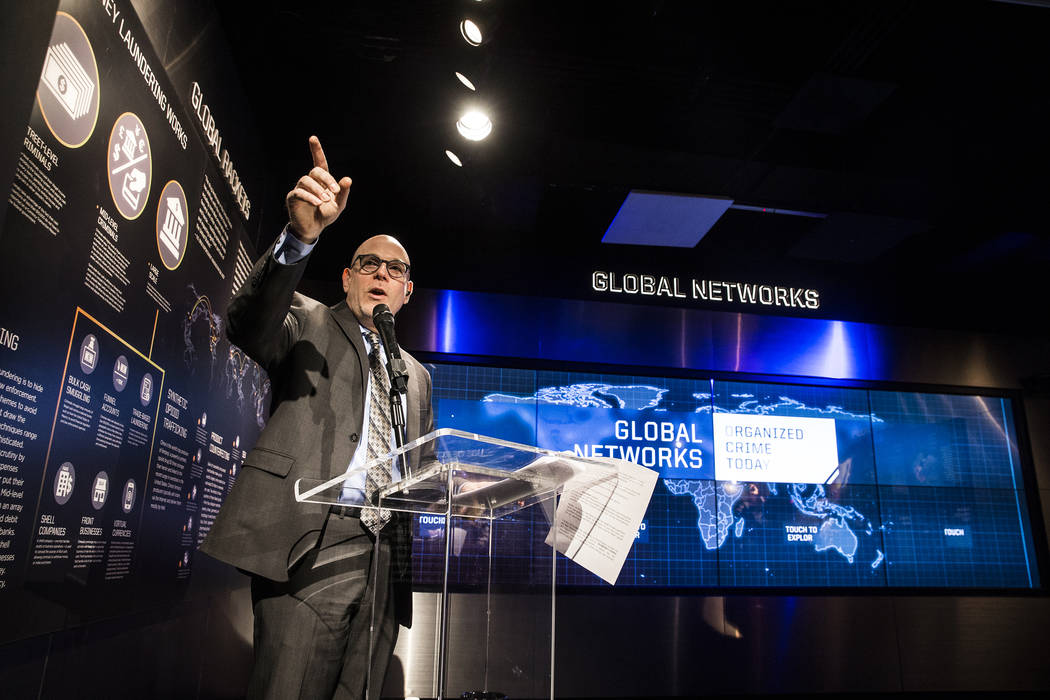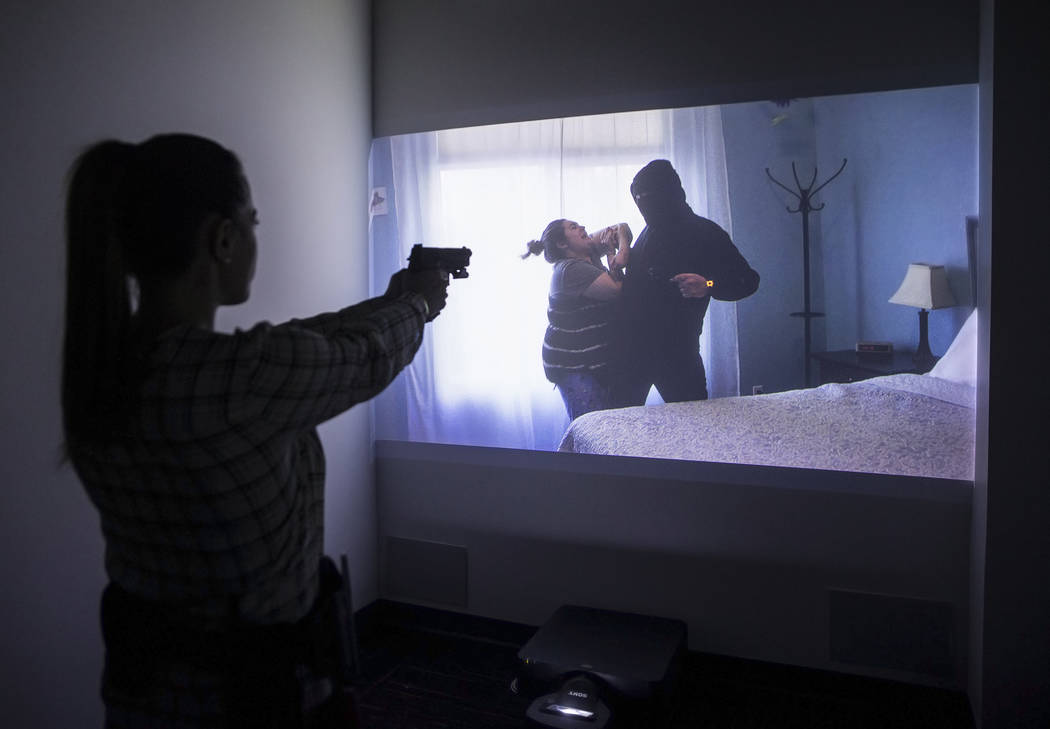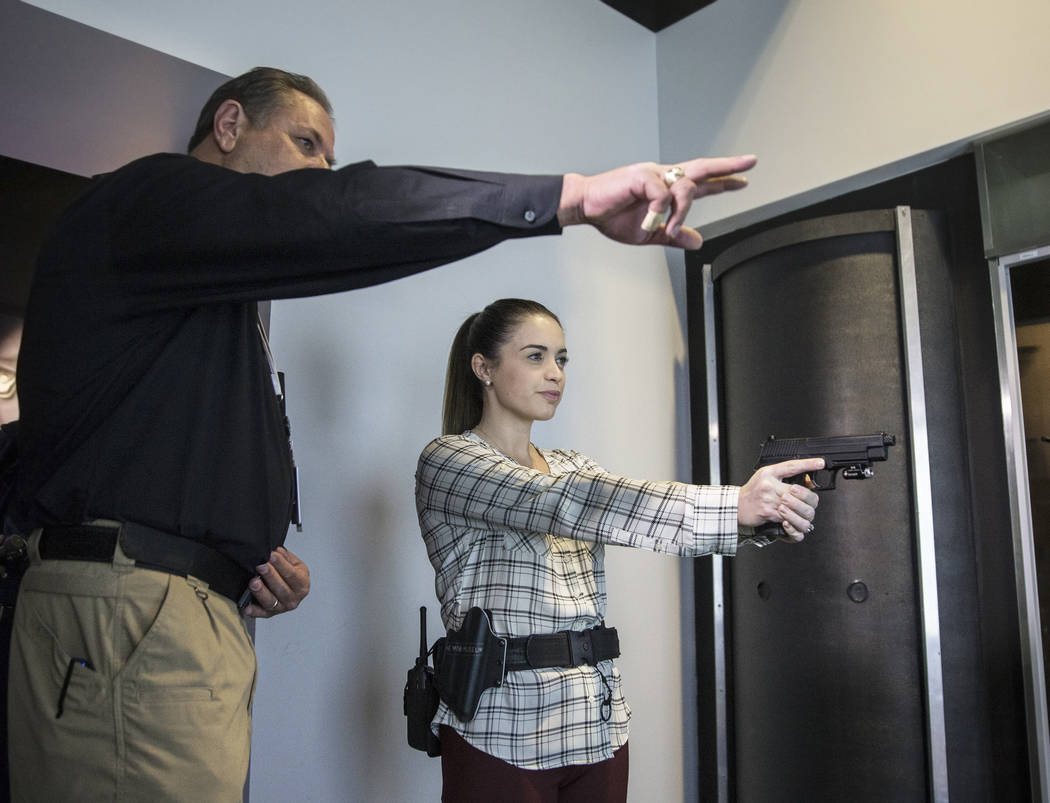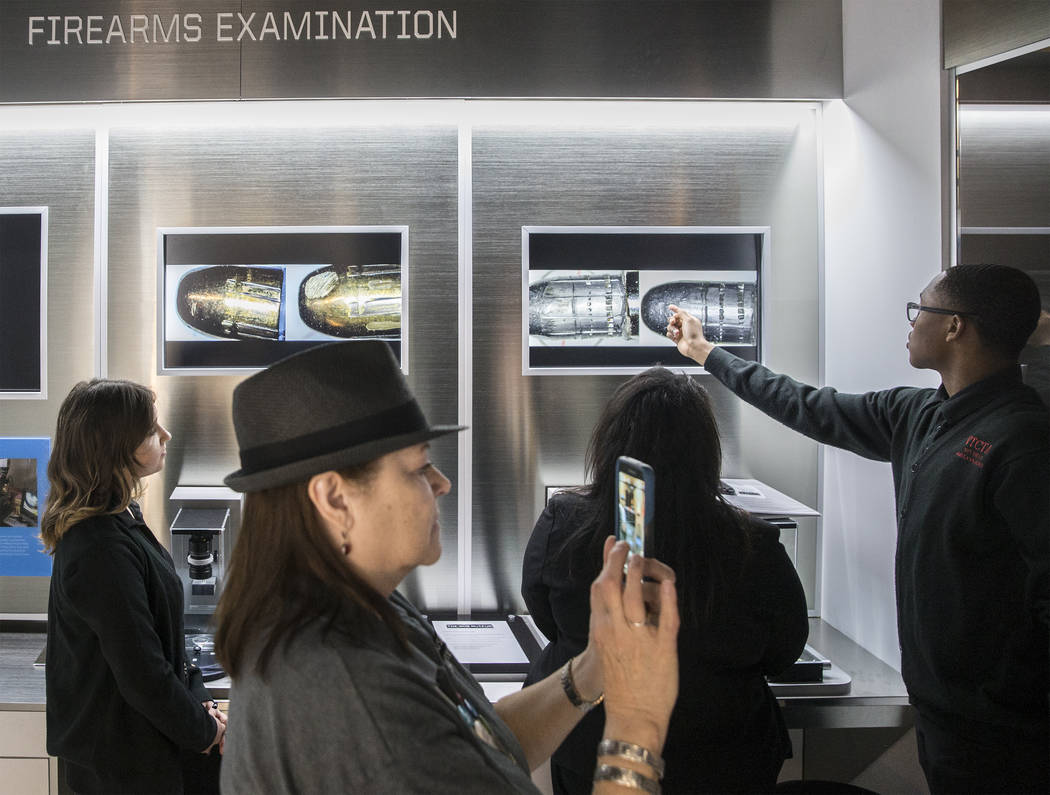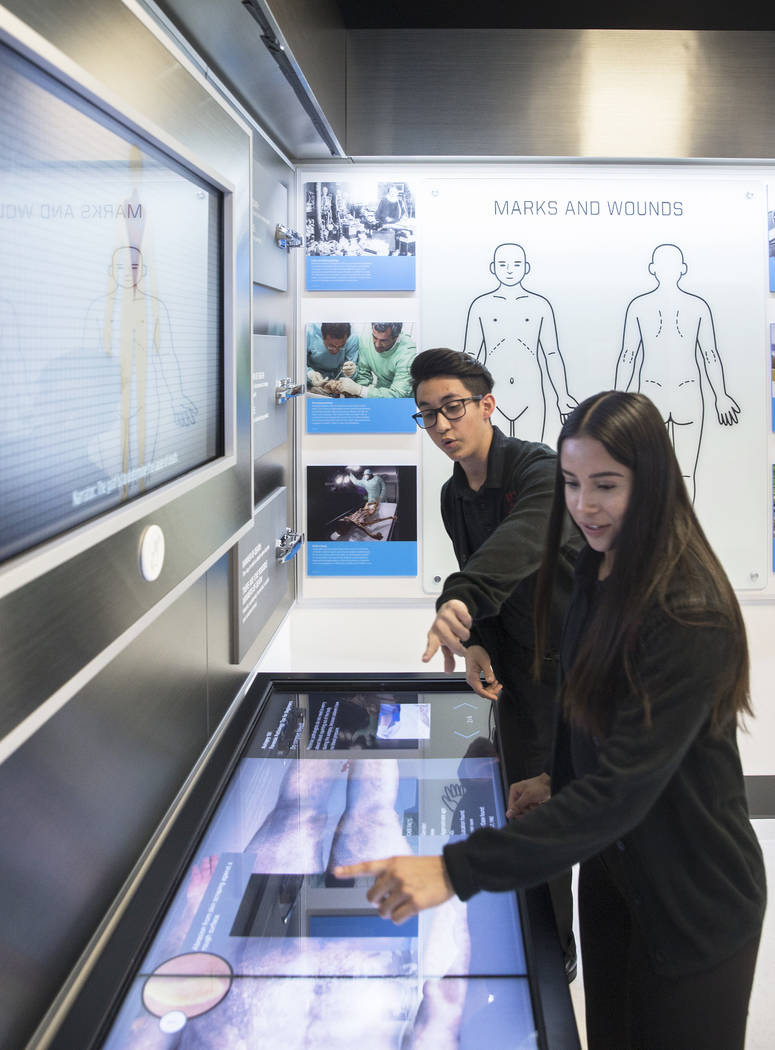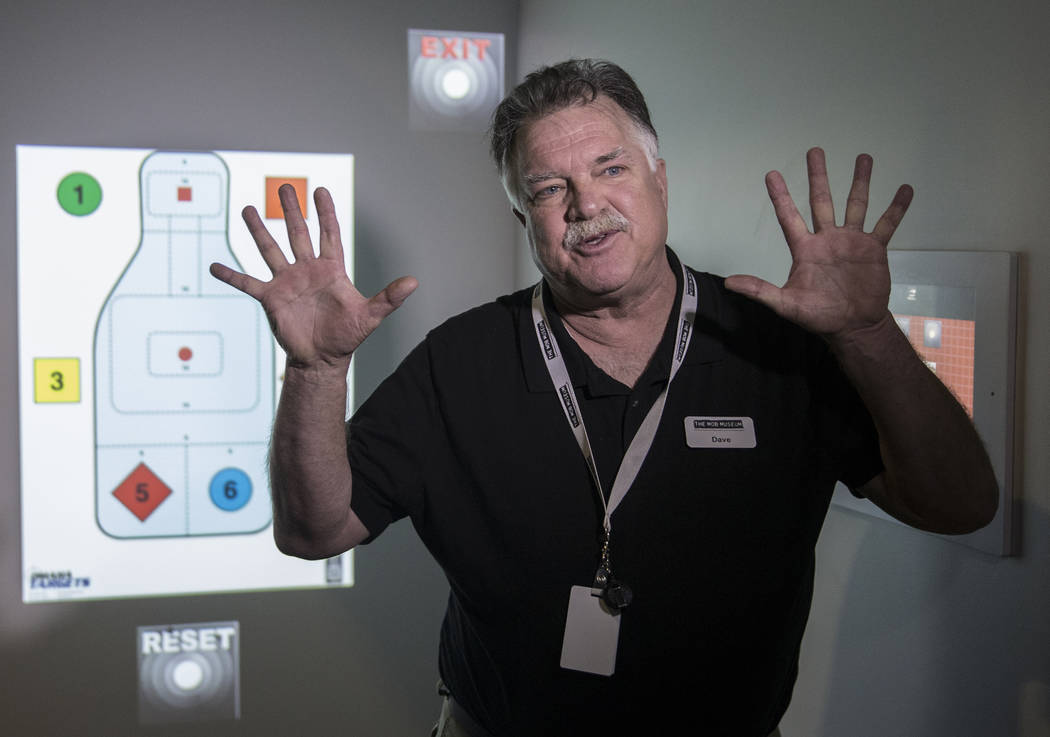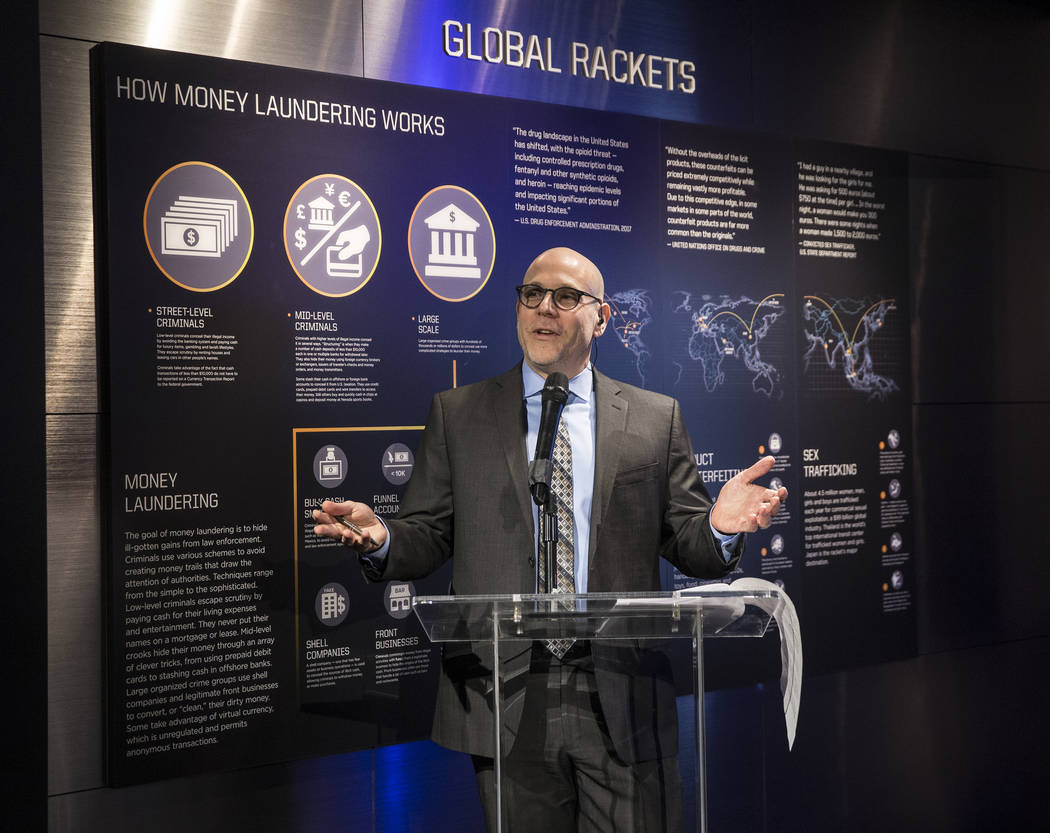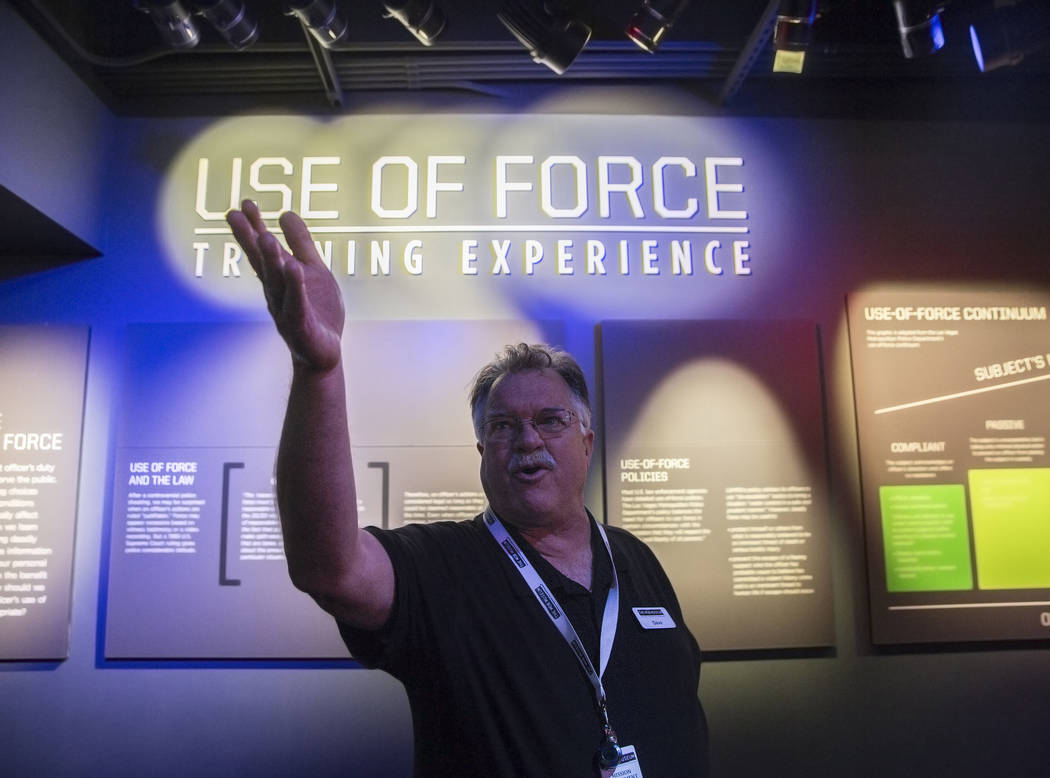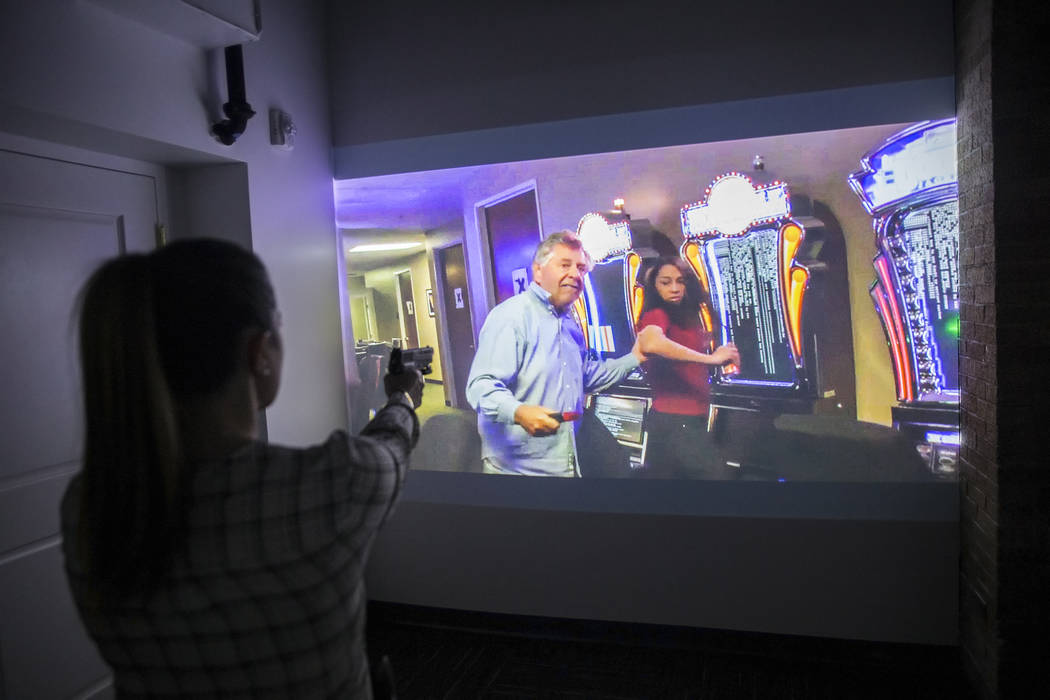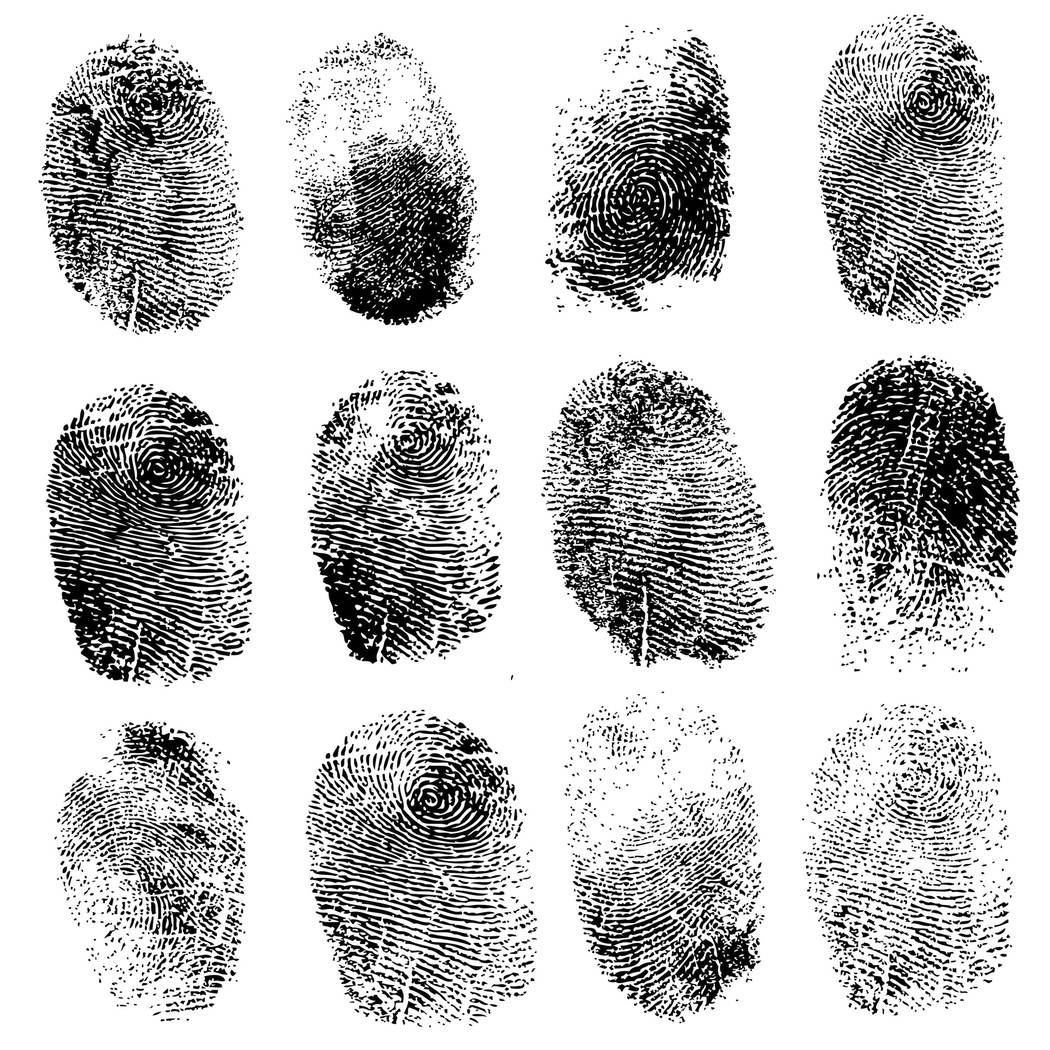Take on a criminal, solve crime at Mob Museum’s new exhibits
Felicia Lindquist is having a really lousy morning.
First, a guy with a knife tried to attack her. Then she encountered some threatening home invaders. Then she happened upon a menacing carjacker — twice!
Lindquist handled the criminal onslaught perfectly, drawing her gun and firing only when she had no other choice. Luckily, no blood was shed because the attacks were of a virtual sort as Lindquist demonstrated one of three new exhibits that opened Wednesday at the Mob Museum, 300 Stewart Ave. in downtown Las Vegas.
Appropriate opening day
The Mob Museum opened on Valentine’s Day 2012, on the anniversary of the 1929 St. Valentine’s Day Massacre in Chicago, when members of Bugs Moran’s gang were shot and killed while lined up along a warehouse’s brick wall.
Bricks from that wall now are on display at the Mob Museum, offering a lower- tech contrast to the new high-tech exhibits.
Those exhibits are: “Use of Force Training Experience,” which puts guests in shoot/don’t shoot scenarios of the type that law enforcement officers face; an interactive “Organized Crime Today” exhibit that explores the evolving, transnational nature of organized crime; and the “Crime Lab Experience,” a hands-on exhibit that examines the intersection of science and crimefighting.
The additions — along with a Prohibition history exhibit, scheduled to open in April, which will include a working speakeasy and distillery — cost $9.2 million. Jonathan Ullman, the museum’s executive director, said the new attractions are “by far the most substantial additions we have made to our exhibits since the (museum’s) grand opening in 2012.”
The additions also rep- resent a modernization of the museum’s offerings “both in terms of the subject matter that we cover as well as the means by which we enable our guests to explore these topics,” he said.
The organized crime exhibit features a 17-foot-wide touchscreen wall through which visitors can select active organized crime groups — including Mexican cartels, Japanese Yakuza, Eastern European and Russian mafias and outlaw cycle gangs — learn about the law enforcement agencies that combat them, and discover the groups’ surprising assortment of crimes, from wildlife trafficking to money laundering.
Geoff Schumacher, the museum’s senior director of content, said the exhibit is designed to be continually updated.
“We’ve always had a small exhibit that focuses on modern organized crime, but this is an opportunity to really delve into that more deeply and look at the transnational nature of organized crime,” he said. “It’s all over the world. It’s interconnected.”
The other two new exhibits focus on “methods that law enforcement uses to apprehend and prosecute criminals and disrupt criminal enterprises,” Ullman said.
‘Keep your distance’
For the “Use of Force Training Experience” — which, like the “Crime Lab Experience,” is entered by paying an additional fee — guests are given an orientation about use of force guidelines, gun safety rules and police procedures, then are given a gun to use in video simulations and an encounter with an actor.
“Keep your distance. Distance is your friend,” trainer Michael Gray tells Lindquist. Gray, a police officer for 34 years who now is a museum use of force coordinator, says the instruction he gives guests is similar to what officers in training receive.
It’s serious business, and surprisingly intense, but Lindquist, who manages the “Use of Force” and “Crime Lab” exhibits, judges her shoot/don’t shoot scenarios perfectly.
Lindquist admits that experiencing firsthand the split-second judgments officers must make and the difficulty of shooting accurately in a stressful situation was revealing.
“I was one of those people (who said), ‘Why’d (an officer) kill him? Why not just shoot him in the arm?’ ” she said. “Now I know.”
The “Crime Lab Experience” takes guests through the science of death investigations, DNA and fingerprint analysis, crime scene investigation and firearm examination.
Guests can view digital images of real cadavers, all “connected to a real mob hit of some kind,” says Claire White, the museum’s educational programs manager. Then, visitors “go through a series of questions just as a coroner would,” to determine the cause of death.
Also in the “Crime Lab,” visitors can compare their fingerprint subtype to a database of actual criminals’ fingerprints, and peer through microscopes to detect potential evidence.
Organized crime hasn’t been relegated to novels, movies and history books, Schumacher said. “The mob is still with us. That is the point. The mob has never left, but it’s changed its face.”
Contact John Przybys at reviewjournal.com or 702-383-0280. Follow @JJPrzybys on Twitter.
Just the facts
The Mob Museum's "Use of Force Training Experience" costs $12 in addition to the museum's general admission price, while the "Crime Lab Experience" costs an additional $7.
All-access packages, which include museum admission and the two fee-based new features, are $35.95 for Nevada residents and $41.95 for nonresidents.
Crime Lab participants must be at least 11 years old, but the attraction is recommended for ages 12 and up. Those under 16 must be accompanied by an adult.
"Use of Force Experience" participants must be at least 16, although the attraction is recommended for ages 18 and up. Parental consent is required for minors. themobmuseum.org, 702-229-2734



